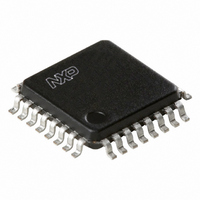TDA8002CG/C1,518 NXP Semiconductors, TDA8002CG/C1,518 Datasheet - Page 26

TDA8002CG/C1,518
Manufacturer Part Number
TDA8002CG/C1,518
Description
IC INTERFACE CARD 32-LQFP
Manufacturer
NXP Semiconductors
Datasheet
1.TDA8002CGC1518.pdf
(28 pages)
Specifications of TDA8002CG/C1,518
Package / Case
32-LQFP
Controller Type
Smart Card Interface
Interface
Analog
Voltage - Supply
3 V ~ 6.5 V
Current - Supply
140mA
Operating Temperature
-25°C ~ 85°C
Mounting Type
Surface Mount
Maximum Operating Temperature
+ 85 C
Minimum Operating Temperature
- 25 C
Mounting Style
SMD/SMT
Lead Free Status / RoHS Status
Lead free / RoHS Compliant
Lead Free Status / RoHS Status
Lead free / RoHS Compliant, Lead free / RoHS Compliant
Other names
568-3518-2
935261709518
TDA8002CGB-T
935261709518
TDA8002CGB-T
Available stocks
Company
Part Number
Manufacturer
Quantity
Price
Company:
Part Number:
TDA8002CG/C1,518
Manufacturer:
NXP Semiconductors
Quantity:
10 000
Philips Semiconductors
SOLDERING
Introduction to soldering surface mount packages
This text gives a very brief insight to a complex technology.
A more in-depth account of soldering ICs can be found in
our “Data Handbook IC26; Integrated Circuit Packages”
(document order number 9398 652 90011).
There is no soldering method that is ideal for all surface
mount IC packages. Wave soldering is not always suitable
for surface mount ICs, or for printed-circuit boards with
high population densities. In these situations reflow
soldering is often used.
Reflow soldering
Reflow soldering requires solder paste (a suspension of
fine solder particles, flux and binding agent) to be applied
to the printed-circuit board by screen printing, stencilling or
pressure-syringe dispensing before package placement.
Several methods exist for reflowing; for example,
infrared/convection heating in a conveyor type oven.
Throughput times (preheating, soldering and cooling) vary
between 100 and 200 seconds depending on heating
method.
Typical reflow peak temperatures range from
215 to 250 C. The top-surface temperature of the
packages should preferable be kept below 230 C.
Wave soldering
Conventional single wave soldering is not recommended
for surface mount devices (SMDs) or printed-circuit boards
with a high component density, as solder bridging and
non-wetting can present major problems.
To overcome these problems the double-wave soldering
method was specifically developed.
If wave soldering is used the following conditions must be
observed for optimal results:
1999 Oct 12
Use a double-wave soldering method comprising a
turbulent wave with high upward pressure followed by a
smooth laminar wave.
IC card interface
26
During placement and before soldering, the package must
be fixed with a droplet of adhesive. The adhesive can be
applied by screen printing, pin transfer or syringe
dispensing. The package can be soldered after the
adhesive is cured.
Typical dwell time is 4 seconds at 250 C.
A mildly-activated flux will eliminate the need for removal
of corrosive residues in most applications.
Manual soldering
Fix the component by first soldering two
diagonally-opposite end leads. Use a low voltage (24 V or
less) soldering iron applied to the flat part of the lead.
Contact time must be limited to 10 seconds at up to
300 C.
When using a dedicated tool, all other leads can be
soldered in one operation within 2 to 5 seconds between
270 and 320 C.
For packages with leads on two sides and a pitch (e):
– larger than or equal to 1.27 mm, the footprint
– smaller than 1.27 mm, the footprint longitudinal axis
The footprint must incorporate solder thieves at the
downstream end.
For packages with leads on four sides, the footprint must
be placed at a 45 angle to the transport direction of the
printed-circuit board. The footprint must incorporate
solder thieves downstream and at the side corners.
longitudinal axis is preferred to be parallel to the
transport direction of the printed-circuit board;
must be parallel to the transport direction of the
printed-circuit board.
Product specification
TDA8002C













